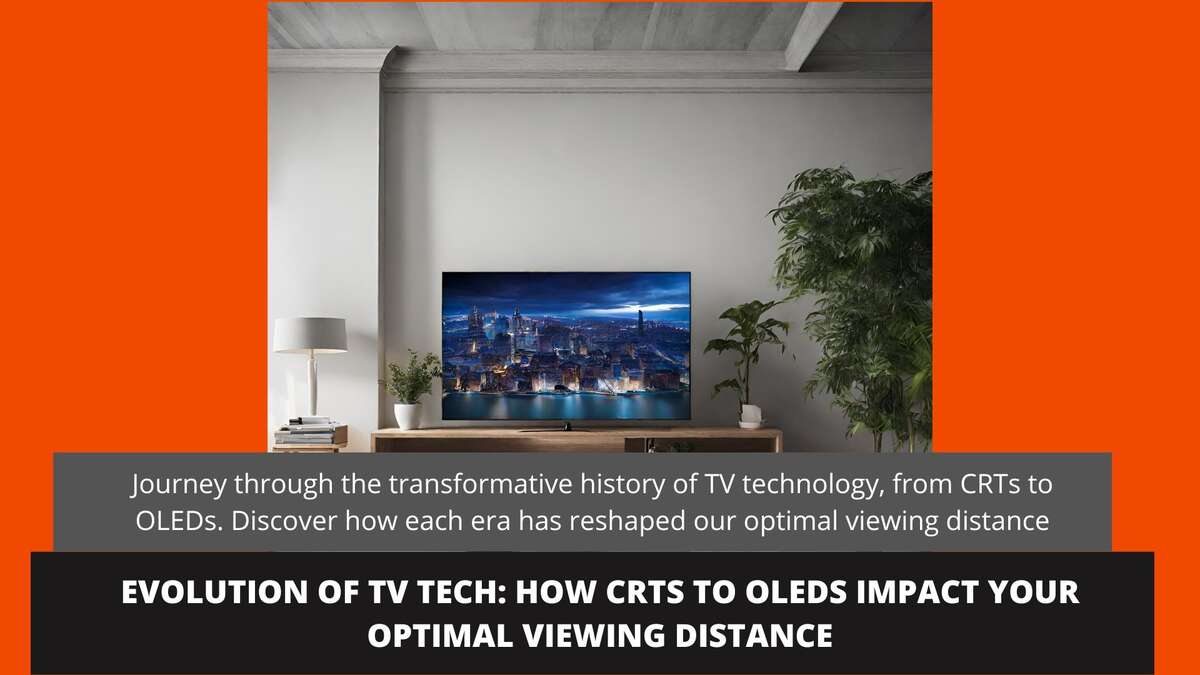The television, an innovation that has transformed the way we consume entertainment and information, has seen a riveting journey of technological advancements. From the humble beginnings of the Cathode Ray Tube (CRT) to the visual splendor of OLED, each progression has redefined our viewing experience. But with these technological leaps, the old adage of "one size fits all" in terms of viewing distance no longer holds. As we delve into the evolution of TV technology, we'll uncover how each stage has influenced the recommendations for optimal viewing distances.
The Cathode Ray Tube Era
Most of us might remember the bulky television sets of the past – the CRTs. These sets utilized electron beams that fired onto a phosphorescent screen to create images. The screen's convex shape and lower resolution meant viewers needed to sit at a particular distance to get a clear picture without distortions. Often, the recommended viewing distance was relatively far to prevent eye strain caused by the screen's flicker and brightness.
“With CRTs, clarity came with distance. The further you sat, the more comfortable and clearer the viewing experience.”
The Advent of Flat-Screen LCDs
With the turn of the century, CRTs began to phase out, making way for Liquid Crystal Displays (LCDs). These flat-screen marvels were not only space-saving but also boasted higher resolutions. Pixels became tighter, and images clearer. With a more consistent display and reduced eye strain, the optimal viewing distance reduced. People could now sit closer and enjoy a larger viewing angle without the drawbacks of distortion.
Enter the LED Revolution
The progression from LCDs led to Light Emitting Diodes (LED) televisions. Using tiny diodes meant even clearer pictures and brighter displays. With the introduction of 4K resolutions, the TV size-distance dynamic shifted again. The sheer density of pixels in these newer models meant viewers could sit even closer without distinguishing individual pixels, making the experience more immersive.
The Pinnacle: OLED and Viewing Perfection
The latest in TV technology, Organic Light Emitting Diodes (OLED), have set new standards. With the ability to turn on and off individual pixels, OLEDs offer perfect blacks, creating an unparalleled contrast ratio. This sharpness and clarity mean that not only can viewers sit closer to larger screens without any loss in detail, but the viewing angles have also greatly expanded. It's a visual treat from nearly any angle in the room!
Why "One Size Fits All" No Longer Applies
As we've journeyed from CRTs to OLEDs, it's evident that a static recommendation on viewing distance is outdated. Various factors, from screen resolution, pixel density, and even the technology powering the screen, play pivotal roles in determining how close or far one should sit for an optimal experience.
The complex interplay of these elements can be daunting for the average viewer. Fortunately, tools like the TV Size and Viewing Distance Calculator have emerged. These tools consider the nuances of modern screens, offering tailored recommendations that ensure you're getting the best out of your TV, irrespective of its technology or size.
“The television experience has evolved from a passive activity to an immersive journey. Understanding the science and technology behind it ensures that every frame, every color, and every detail is appreciated as intended.”
Conclusion
The metamorphosis of television technology is a testament to human ingenuity and our pursuit of perfection. As we stand on the cusp of further advancements, possibly venturing into areas like quantum dot technology and beyond, it's essential to recognize that with every leap forward, our approach to viewing must adapt. By understanding the relationship between TV technology and optimal viewing distance, we can ensure that our cinematic experiences at home rival those of theaters.
Embrace the evolution, and happy viewing!
